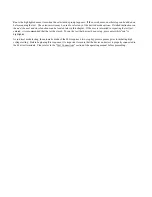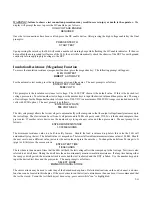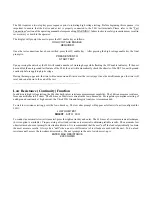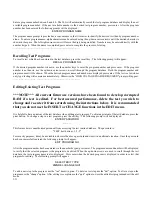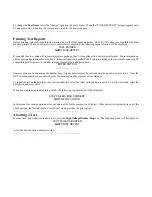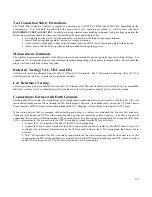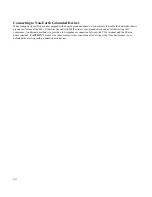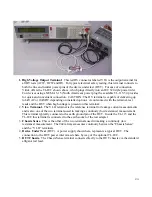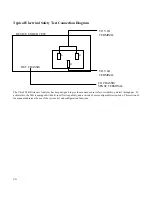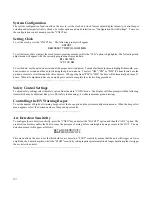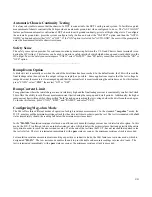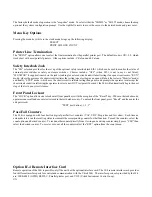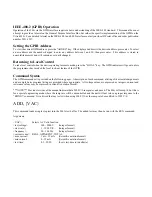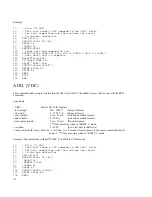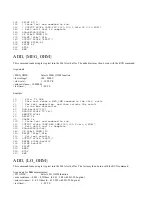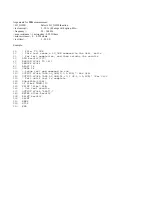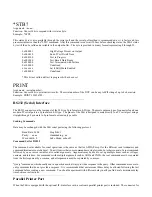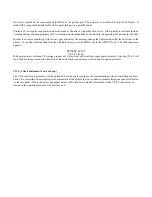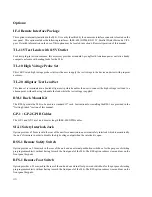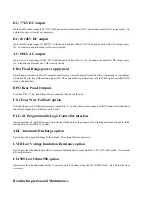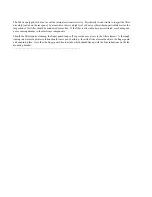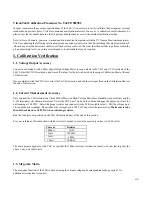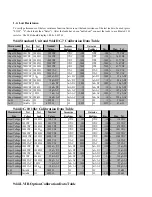
28
Automatic Chassis Continuity Testing
It is always advisable to ensure that the chassis of a DUT is connected to the DUT's earth ground system. To facilitate a quick
measurement of chassis continuity the 944i provides an automatic ground test when configured to do so. The "AUTO-GND"
feature performs an automatic verification of DUT chassis to earth ground continuity, prior to all high voltage tests. To configure
the automatic ground test, press the system configure (cnfg) button and select the “SAFETY” option and then the "AUTO-
OHMS" option and select either “ON” or “OFF”. If the "ON" option is selected for "AUTO-GND", the user will be prompted to
enter the maximum allowable chassis resistance.
Safety Sense
The safety sense option provides for continuous continuity monitoring between the V LO and Chassis Sense terminals (even
during the HV testing). This feature can be used to monitor a safety interlock switch which when opened would shut down the
HV output. To set the safety sense status press “CNFG”, select “SAFETY” then “SS”(safety sense) then select either the "ON" or
"OFF" option.
.........................................................................................
Ramp Down Option
A dielectric test is normally over when the end of the dwell time has been reached. In the default mode, the 944i will record the
final leakage value then reduce the output voltage as rapidly as possible. Some applications require that the test voltage be
ramped down at the same rate it was ramped up and that the current level is monitored during the entire descent. For this feature,
press “CNFG”, select “RMP” then select “ON” or “OFF”.
Ramp Current Limit
For applications where the initial charge current is relatively high and the final leakage current is considerably smaller, the Vitrek
944i offers the ability to set different maximum current limits during the ramp-up and dwell periods. Additionally, the higher
ramp current limit will apply for the specified “hold” period upon reaching the test voltage before the dwell countdown begins.
To invoke this feature, press “CNFG”, “RMP”, and “RAMP-I” and select “YES”.
Configuring Meg-ohm Mode
The 944i offers three different modes of operation for high resistance measurement. In the standard
"meg-ohm"
mode, the
D.U.T. must exceed the minimum resistance limit for the entire test time in order to pass the test. The test is terminated with a
fail
status immediately should the reading fall below the minimum resistance limit.
In the
"IR-MIL"
insulation resistance test mode, an allowance is made for leakage current due to dielectric absorption. In this
mode, the D.U.T. is allowed to have an initial resistance value, which is below the min resistance limit and permitted the entire
test period in order to reach the min resistance value. If at the end of the test time the D.U.T. has not reached the required value
the test is failed. The test is terminated immediately with a
pass
status as soon as the minimum resistance limit is exceeded.
For insulation resistance measurements involving capacitive or inductive loads, the 944i features a low noise mode, which is,
designated
"IR-LN"
. The low noise mode enables the unit to provide stable and accurate readings into reactive loads. The
test is terminated immediately with a
pass
status as soon as the minimum resistance limit is exceeded.


